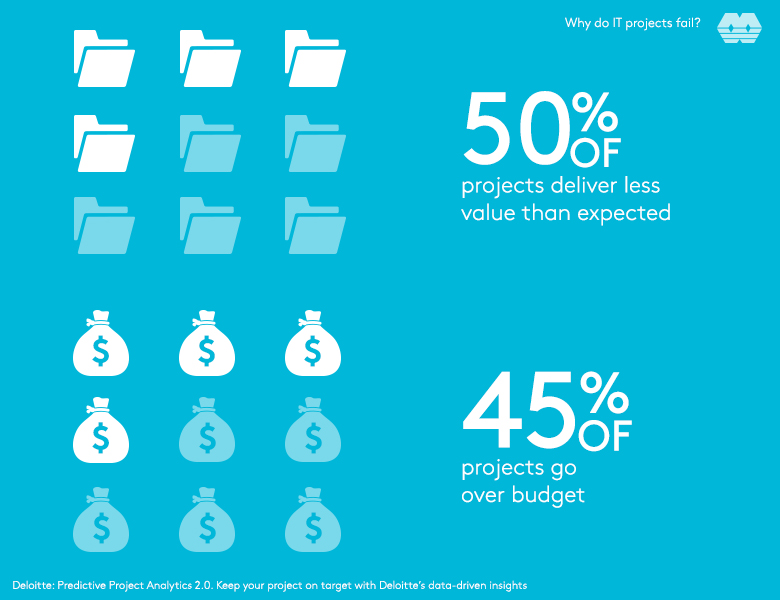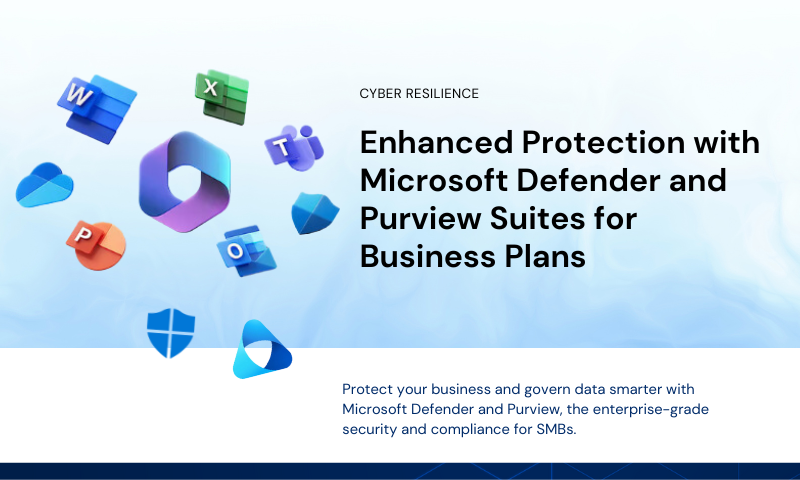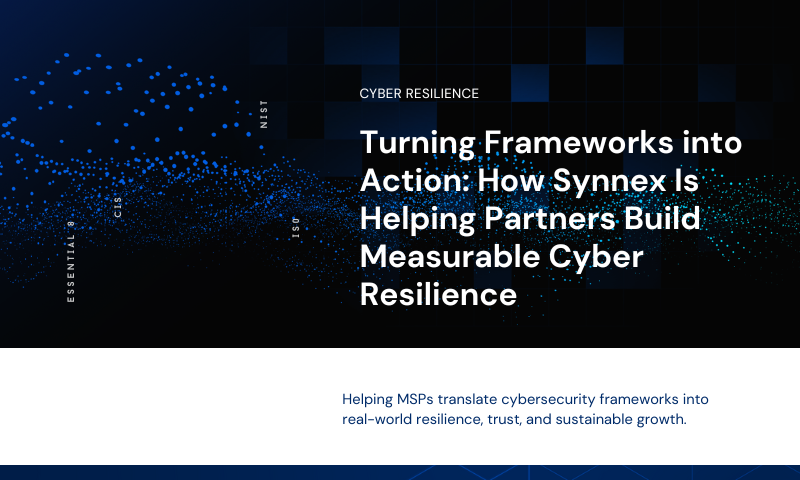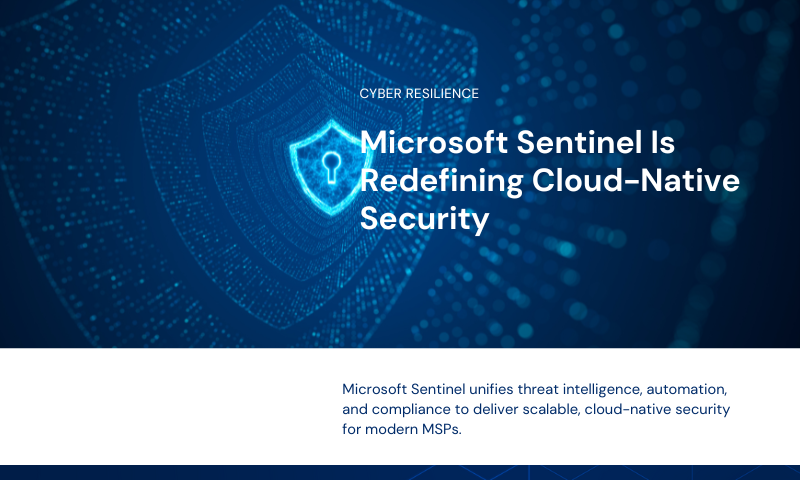Have you ever put in hours upon hours of work for a project that just didn’t go how you expected it to?
The Planview annual Project and Portfolio Management survey found less than 45 per cent of IT project implementations are successful.

[Deloitte: Predictive Project Analytics 2.0. Keep your project on target with Deloitte’s data-driven insights]
How do you measure success vs failure?
What planning strategies do you use?
Do you, or someone in your team know how to code?
These common questions are among many that you should be asking yourself before embarking on your IT project journey.
What is failure?
The state of not meeting a desirable outcome or achieving a specific goal, right?
In the IT industry, this can range from hardware failures, backup and upgrading issues or the inability to complete a proposed project that would have led to increased revenue and business growth.
The cost of project failures in all shapes and forms can be significant and leave your business at a competitive disadvantage.
Although there are many resources and tips on avoiding project failures, businesses are still seeing their projects continue to disappoint.
What is success?
The building blocks of next-generation IT infrastructure that empower successful projects is the fine line between triumph and defeat.
Research from Deloitte highlights the need for businesses to objectively assess when projects are at risk of underperformance and the capacity to proactively correct course and improve project delivery – before things go off track.
At times, there can be a difference between how IT managers and experts rate the success of their own projects.
This comes down to the difference in the definition of success and is crucial to understand.
Success in IT projects can range from:
– Software projects delivered to the business,
– Projects staying within the projected budget,
– Meeting deadlines,
– Achieving specific business goals and objectives and,
– Functioning throughout their planned lifespans without major hiccups or incurring significant or unplanned costs.
The future is not as dim as it may seem.
PMI’s 2017 global survey conducted of project management practitioners and leaders says the average proportion of IT projects deemed utter failures is at a low 14 per cent.
This research shows that for the first time in five years, more projects are meeting goals and business intent, but businesses need to have plans in place to ensure this figure remains low.
4 Simple tips to success
1. Have a clear strategy
Understanding the project strategy early on lays the groundwork for the budgeting and scheduling of projects before it’s up and running.
Clearly defining the roles and responsibilities of all stakeholders involved avoids confusion over accountability and adequate governance. This enhances transparency and integration across various project control functions.
Businesses should always be on the lookout for best practice approaches and invest in early assessments that drive business initiatives forward.
Identify any risks or weaknesses associated with the nature of your project, which can harm productivity or morale.
2. Acquire suitable skills
Often the lack of buy-in from the team can have a ripple effect on a business.
You can’t execute a strategy on your own.
Retain good staff
At times, strategy leads do a great job in gaining support from their immediate colleagues and direct reports but find it difficult to ensure that support cascades throughout the organisation.
By focusing incentives on the right metrics with people who not only identify but also resolve project challenges can build a team culture that breeds collaboration, enthusiasm and ambition.
If you find a project to succeed, de-brief and gather constructive feedback for new strategic plans in the future to keep the momentum going.
Have face to face discussions, regular strategy meetings and find the right strategy mentor that will keep you on the right path.
3. Quality data should support your decisions
Link the right key performance indicators to the right outcomes.
This reduces subjective bias when monitoring and reviewing the project performance.
Early demos
Although a system is only fully demonstrated once the development stage has come to an end, there is no reason why prototypes cannot be created.
This doesn’t have to be intricate or in-depth but acts as a spring broad for understanding and testing the project.
Early demos create room for comments or ideas for any alterations that benefit the project outcome in the foreseeable future.
4. Coding frenzy
A challenge when making changes to a legacy system can be the customisation by lines of code.
In some cases, the original developers in a business have since left and when it is required that coding is changed, this can cause serious issues.
A solution to this is low-code or even no-code platforms.
Custom code is complex which often leads to over-spending, missed deadlines and the inability to deploy projects.
Businesses can save time and scale quickly as the implementation phase is shortened, allowing IT teams to avoid challenges associated with code-heavy platforms.
The migration from a code-filled system to a low or non-code platform isn’t as hard as it may sound.
Most if not all these platforms have processes in place to ease replication of a project.
Thought leaders constantly have their ear to the ground, listening to threats and opportunities and move quickly to adjust plans accordingly.
There are powerful cloud management tools that encouraging users to adjust and tweak plans in a real-time.
Take control!
The main goal of any IT expert is ensuring technology is kept up-to-date, secure and cost-effective.
With the rise in the number of devices from desktops and laptops to smartphones and more, it has become increasingly complex to manage the lifecycle of IT assets with over 62 per cent of chief procurement officers who do not believe their team have the skills and capabilities to deliver their procurement strategy.
Now more than ever, IT experts are challenged to develop solutions that control, manage, maintain and support this shift in device usage and allow professionals in all areas of business to do what they do best.
Our Technology-as-a-Service (TaaS) program enables resellers to tackle this pressing device management challenge head-on.
Transforming the way devices are managed and sold, we combine hardware, cloud managed services, buyback and configuration under a single monthly bill from a single portal.
This top-down support means partners of all sizes can bundle device management into the monthly cost of each device they deploy.
This can be done through one single login, under one payment and one check out. It’s that simple.
Manage your solutions
With Avast Managed Workplace Synnex partners can manage their client’s device fleets within a single platform.
The Avast platform provides powerful, security-focused remote monitoring and management of devices that will enable you to continuously provide value to your clients.
Partners can:
– Deploy antivirus,
– Run real-time security assessments,
– Manage and secure all users and network security levels and,
– Quickly recommend solutions to keep their clients protected.
Device Management Features from Avast:
– Premium remote control,
– Centralized dashboard,
– Comprehensive reporting,
– Real-time monitoring and alerting,
– Patch management and,
– Asset management.
Device Management is just one example of how our TaaS program is continuing to push digital transformation in the channel for productivity.
There are undoubtedly a whole host of other reasons why strategic plans fail.
But in our experience, these are by far the most common – but thankfully, also very avoidable.
We’d love to hear your thoughts on this topic.
However, for more information on how Synnex TaaS can help transform your business success, contact your account manager today.



This information is so important to know! Thanks SYnnex
Great read!!!
I really appreciate your post and you explain each and every point very well.Thanks for sharing this information. And I’ll love to read your next post too.